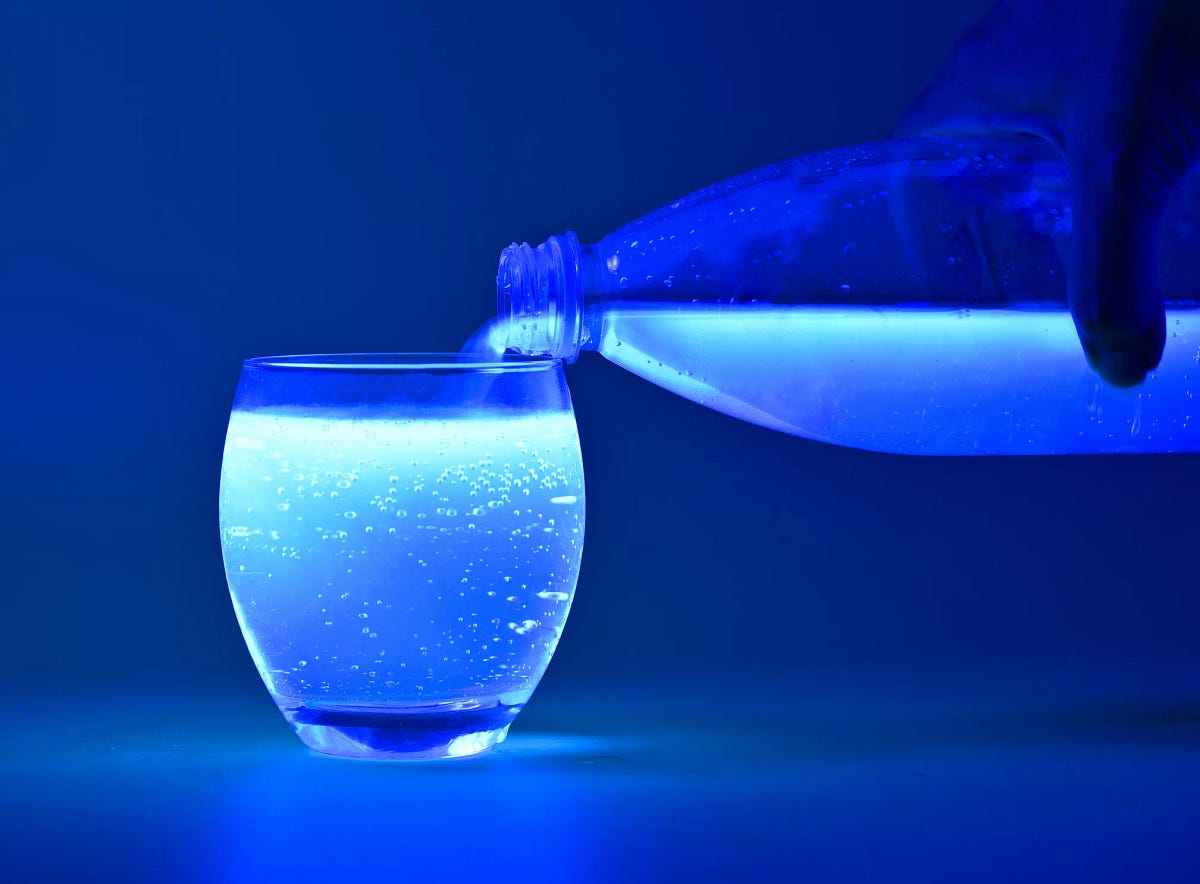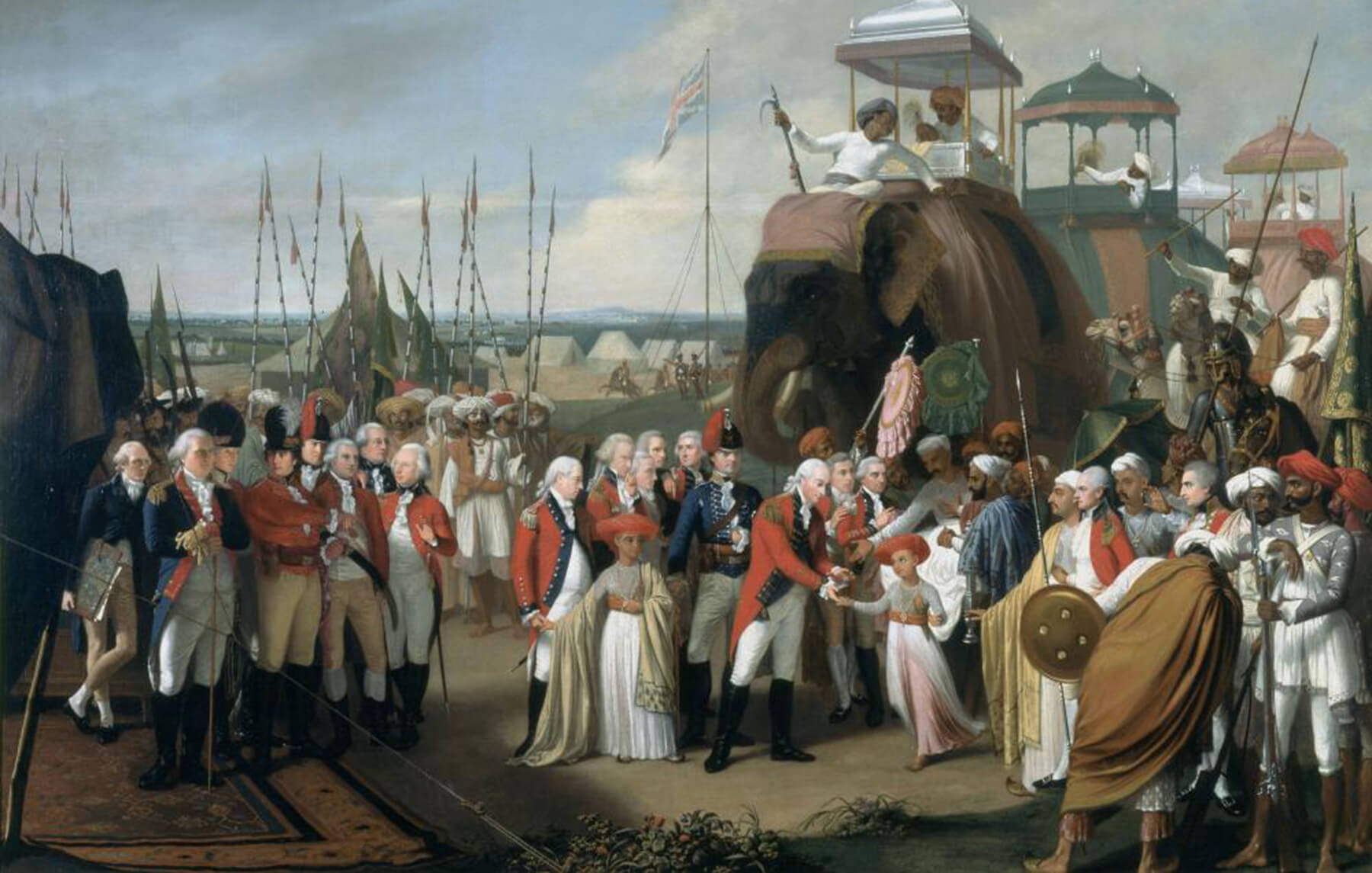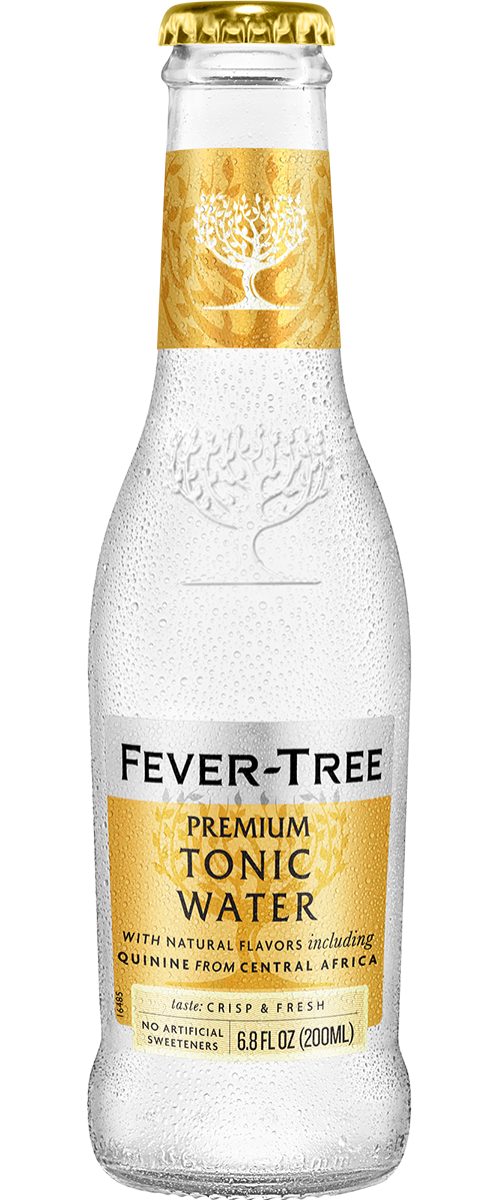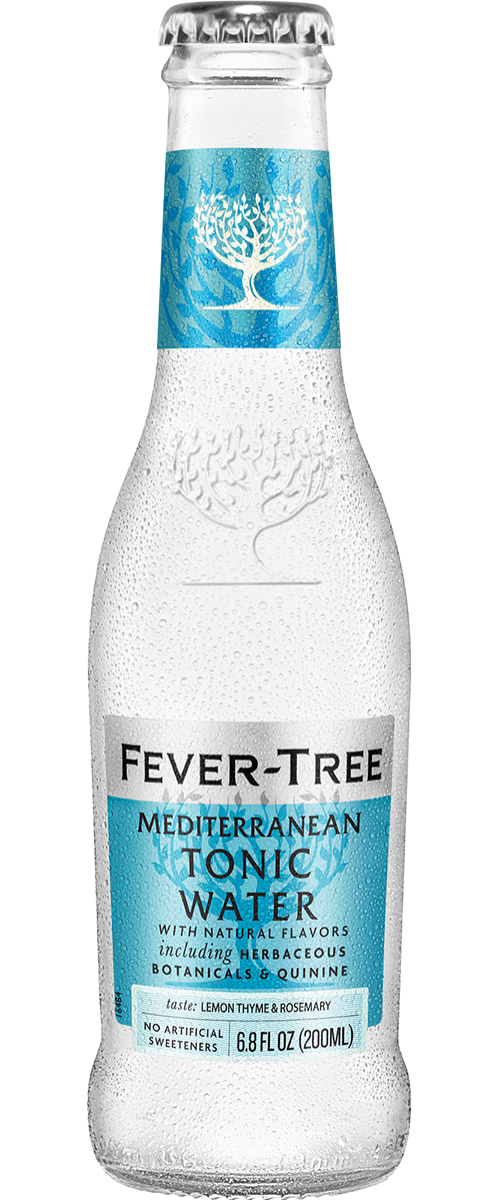Tonics
First, what is tonic water? It's carbonated water, or fizzy water. But it has certain special ingredients added such as quinine. This chemical is found in the bark of certain trees and was found to be useful for treating Malaria. In the 1800s, British officials and soldiers were told to take medical quinine to prevent them from getting malaria. It's quinine which gives tonic water its bitter taste. Quinine will glow under ultraviolet light (see image below).

Why is it called tonic water? Generally, a tonic is an agent (such as a drug) that increases body tone. In a broader sense, somebody might say "that day in the country was a tonic for him" which means that the day out invigorated the person and refreshed them. So, from this general sense, the more precise sense of "tonic water" is derived. Erasmus Bond patented a mix of water and quinine as Tonic Water in 1858, according to Walker and Nesbitt. Of course, the derivation is a long one - those who order gin-and-tonics tend to be negatively correlated with those with muscle tone.
At Doggetts we use tonic water products from a brand called Fever Tree. The name is probably a reference to the Cinchona tree. Quinine would be extracted from trees like this and quinine is the defining ingredient of tonic water. Interestingly, the founder of Fever Tree was sat in a pub near Sloane Square when he met with his business partner and they decided to launch the brand. Pubs create the conditions for their own product ranges... In 2005, Charles Rolls, who originally bought up shares in Plymouth Gin, co-founded Fever Tree with Tim Warrillow

The main tonic water product is Indian tonic water. It has its origins in Colonial India. The Fever-tree bottle has a label with a yellow background.

The water does have a sweetness to it. It is also bitter. Fever Tree claim to use quinine from the Democratic Republic of Congo. According to this source, the bubbles absolutely erupt when you pour the tonic. The palate is sweet with effervescent citrus at first. "The nose is sweet orange and sweet lime, with minute bubbles dancing upwards still". How lovely.

Then, there is Mediterranean tonic water. It tastes different from the Indian type. It is sweeter and not so bitter. The official website, fever-tree.co.uk, states that "We use less quinine in our Mediterranean Tonic which, with the addition of rosemary and lemon thyme, produces a much lighter, more fragrant tonic. According to the website, southern France is good for growing the lemon thyme because there are warm winds blowing in from the Mediterranean sea.

So, when to use Mediterranean tonic rather than the default Indian? Fever Tree ought to have a more helpful section on their website for this. At the moment, it is just a list of recommended pairings, which is in reality a showcase of some gin brands they are willing to advertise. There is no discussion of the rule which one should follow. Good Housekeeping states: Complex gins such as Elephant Dry pair well with Indian tonic waters, while fresh, floral gins like Bombay Sapphire are perfect with Mediterranean tonic. Or mix things up and try it with rum or tequila, for a long drink with a twist.
